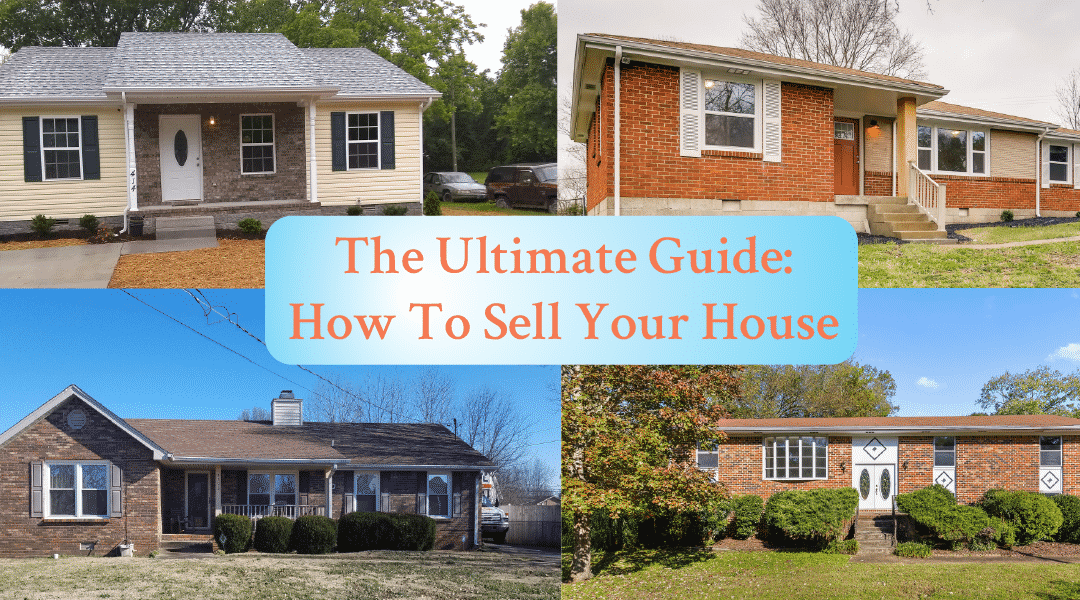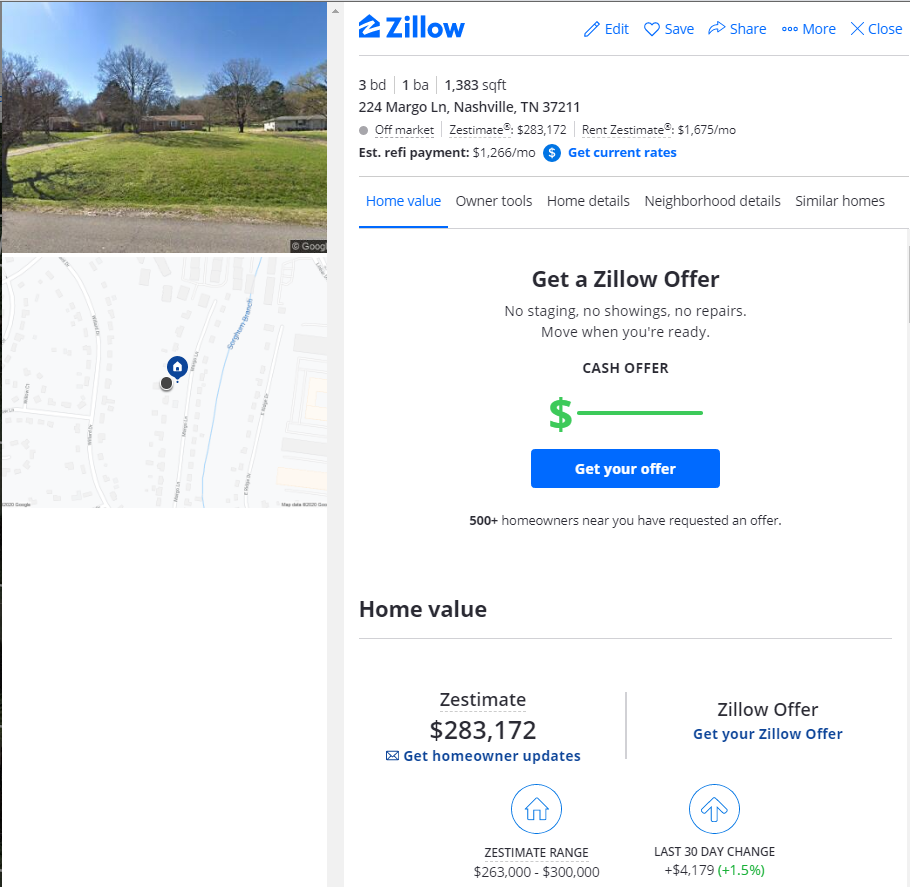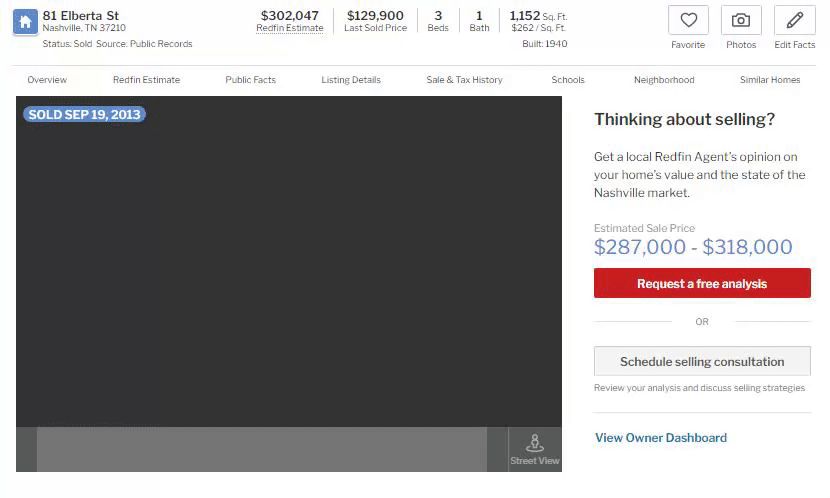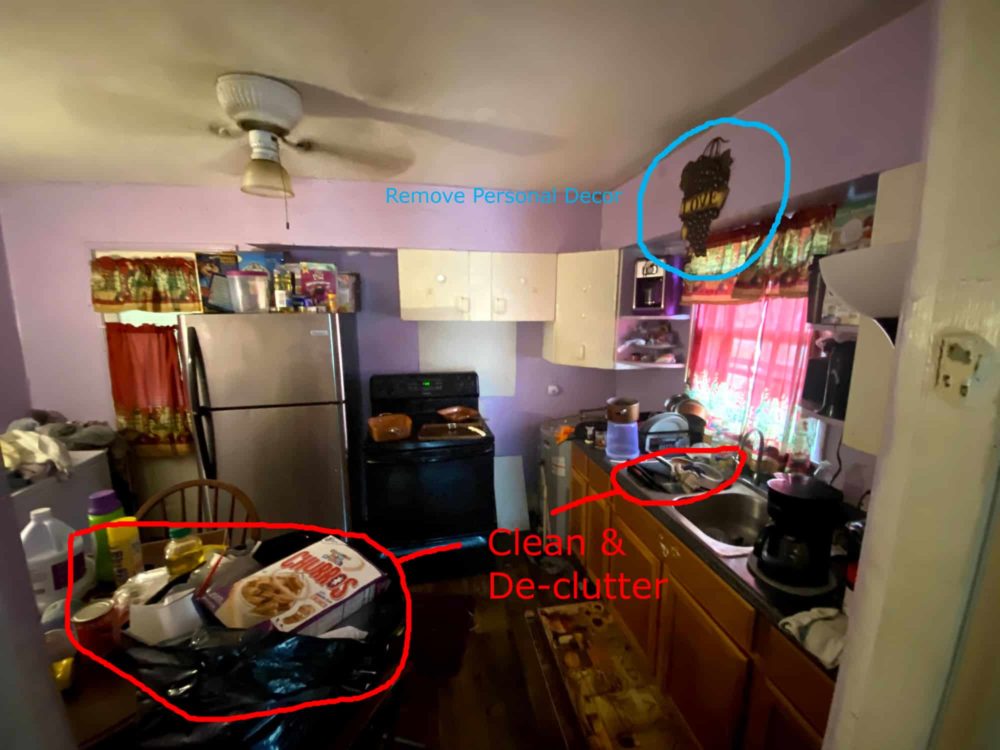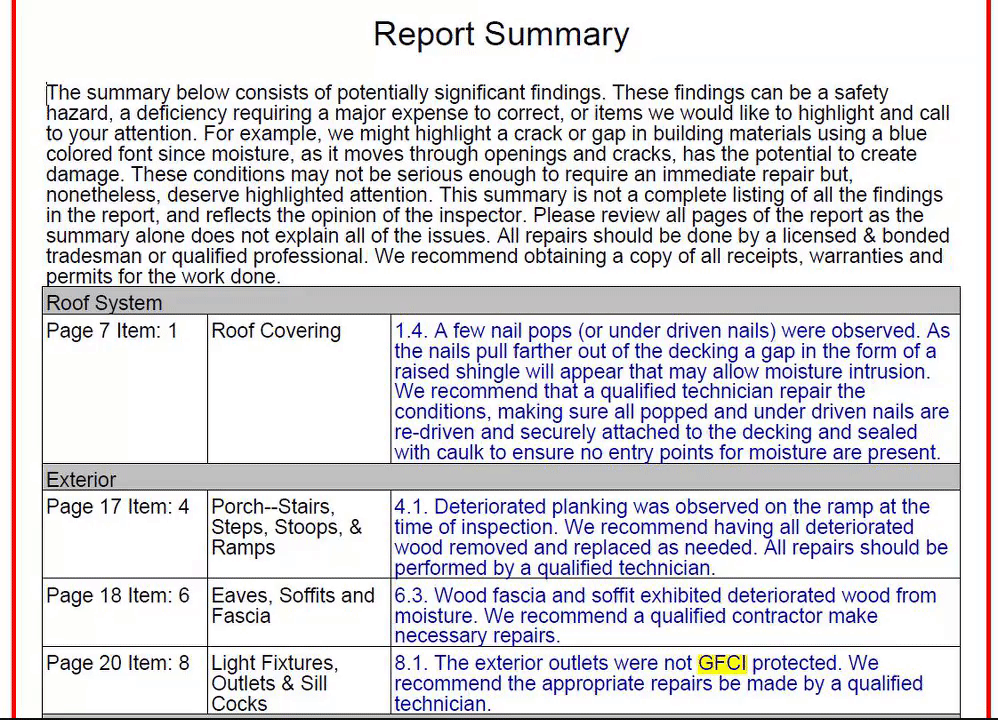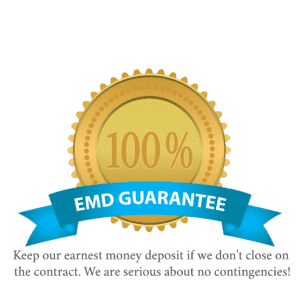After years of buying and selling dozens of properties, we are melting that down into this Ultimate Guide for you to not only understand an overview of the process, but be able to know how to sell your house top to bottom. On this page we cover topics such as:
- How to Sell Your House (or How To Sell A House)
- How to Sell a House by Owner
- How to Sell Your House Yourself
- How to Sell Your House Without a Realtor
Below is a clickable outline, and below that the content begins with our first section about how to sell a house by first pricing it. I recommend using the outline to navigate to sections you need to know about first.
Wherever you are in the U.S. and a few other countries to varying degree, How To Sell Your House: The Ultimate Guide will help you break down the process into 6 steps with precisely how to accomplish each of those steps.
Indeed, if you have the time and the dedication, you can learn all you need to know about how to sell a house by owner by simply working your way chronologically through this guide of best practices and tips. It won’t be easy, but if you are determined to sell without a realtor.
We include topics and tips such as:
- How to price your house by looking at other sales in your neighborhood, and how to apply the math to your place.
- Why you as a seller should pay for an inspection before you list.
- The repairs that get you the most bang for your buck starting with the most effective.
- Best places to advertise your home as exposure = value.
- What an FBI hostage negotiator can teach you about getting a great offer.
- Why the paperwork for selling your house can be way easier than you thought.
How to Sell Your House Outline
Table of Contents
1.2 Calculate Your Home’s Value
2.2 Important Repairs to Make Before Selling a House
2.3 Tidy Up, Personal Items & Decor
2.4 Add More Lighting, Then Add Some More
2.5 Schedule Professional Photo Shoot
4.0 Field Inquiries & Showings
4.1 How to Handle Inbound Buyer Leads
4.2 Showings That Woo Your Buyers
5.1 General Tips for Getting the Best Offer
5.2 Negotiating Offers Fundamentals
6.0 Accept an Offer & Close the Deal
6.1 How To Sell Your House Yourself Paperwork
1. Price Your House
The first step in how to sell your house yourself is choosing a price. For a quick ballpark number, look up your address on Zillow.com then Redfin.com to see their estimated value of your home. In my experience, these values are within 15% of the true value of your home the vast majority of the time.
The most significant variable that will cause more variation than 15% is the condition of your home. If it’s fully renovated or has fallen into disrepair, their algorithms will miss the mark by much more than 15%.
While the value of any home is simply what a buyer is willing to pay, everyone, even appraisers, estimates their opinion of value with comps. Comparables are properties that are similar to yours that have sold nearby.
How To Run Comps
Ideally, you’ll need 3 – 4 comps to really solidify the value of your home. Most real estate professionals would agree that these parameters would need to apply to qualify as a comp:
- Within a ½ mile (the closer comps take priority, and houses across rail road tracks, major roads, etc, don’t usually qualify)
- Sold within the past year (more recent comps take precedence)
- Square footage within 20% of your home
- Same number of Beds and Baths
- Built within a couple decades of your home and ideally of similar type of construction
- Similar condition
That’s fine and dandy, but how in the world do you go about finding and using this “comparables” data? We recommend zillow.com or Redfin.com as free resources to see photos and specs of similar houses that sold nearby. No, they are not 100% accurate and you shouldn’t expect them to be, but they will get the job done and have for us for many years.
MLS data is generally accepted as the most accurate data, but only agents have access to that. And if you planned to use an agent, you probably wouldn’t be wondering how to sell your house without a realtor.
Simply search for your property and start adding the filters mentioned above to view your comps:
Once you are in the map view, set the filters as needed to match the parameters given above such as square footage, beds/baths, and lot size. In Redfin, I like to sort by price per SF and work my way down. Houses are ultimately valued by the price per square foot of similar houses, so you’ll be working to solidify a small range of $/SF that your house would be.
You’ll quickly pick up on the range of price for your neighborhood. Two houses may be nearly the same, but different conditions will result in a spread of price. Your job is to find houses that are in similar condition to yours, and the best way to do that is to look at pictures shown with each of the listings.
You’ll likely find that it’s mostly the renovated houses that have pictures up online, but we have more on that later. You can always drive by houses with no pictures to get more of an idea, as well.
Perhaps it’s common knowledge by now in how to sell a house, but focus especially on kitchens and baths as they will be the leading force in what a house sells for.
If the kitchen has old cabinets with ancient hardware, and a green laminate countertop, you can quickly gather that the rest of the house will follow suit. A house with granite countertops and stainless steel appliances is not going to have green shag carpet and wood paneling walls.
Does this How To Sell Your House: The Ultimate Guide provide enough detail for you? I hope so because we are just beginning. Next, let’s discuss translating comps into what your home is worth.
How to Sell a House: Calculate Your Home’s Price:
Once you’ve gathered your 3 – 4 comps, calculate the price per square foot of each house. This may be provided to you by the website you use, like Redfin. Average together the $/SF for all of them, and that’s the number you multiply against the square footage of your home. For example:
$125/SF X 1200 SF = $150,000
Thus, our example home is worth about $150,000. Again, the true value is what a given buyer is willing to pay, but this is your estimated opinion of value that your research has shown to be roughly what that buyer is likely to pay. It is not an exact science!
Now that you have a starting point for value, choose a pricing strategy:
- Listing slightly under value to encourage a quick bidding war between buyers.
Useful to encourage a quick sale and give you some leverage in negotiation, this strategy can often cause offers to go above your asking price. - Listing right at what you believe the value to be.
The middle ground with “no games.” - Listing for the highest price within reason to give you room to negotiate or give concessions after inspection.
You can always come down from your price, but you can’t go back up! This one allows the possibility for a pleasant surprise of higher value than you thought, and also gives you room to come down. It will, however, take the longest as each time you lower your price, you have to allow time for the new buyer pool (or old buyers keeping an eye on it!) to see the listing and schedule showings to make an offer.
The best pricing strategy for how to sell your house is up to your discretion!
Pricing Tips:
#1 Use specific numbers, such as $199,916. It catches people’s attention, and they may be subconsciously less likely to negotiate your price down.
#2 If showings and offers slow down, you can refresh your listings with a small price drop. $1 is annoying, but $500 – 1000 may be enough to trigger notifications in your buyers email inboxes to take a second look. It’s a way of saying “Don’t forget me!”
#3 Consider pricing it a little higher while throwing in something of value, such as including all appliances or even offering $1,000 at closing to go towards upgrades on the house.
2. Prep Your House for Photos Then Showings
Don’t forget the leg work while researching how to sell your house! To get the best price, or even to get it sold at all, the house has to be presentable. The key here is a buyer has to be able to see themselves living there. First, let’s discuss what repairs and updates your house might need in order to get you the most bang for your buck.
Consider Paying For An Inspection
“Wait, but I’m the seller.” True, but you can keep more cards in your hand for only ~$350 by reviewing an inspection report. You can then choose what repairs you want to make, and what ones you want to save for negotiations during contract.
Most items found on an inspection report are not noticeable to a buyer walking through their showing, as their brain is multitasking to see if everything checks off their boxes (“Big kitchen? Plenty of closet space? Open concept living & dining room?”). Thus, most repairs only come to light once an inspection is completed by the buyer about a week into the contract.
Some repairs may not cost much but tend to “scare” buyers into opting for other houses. Here’s a how to sell your house story from the vault of yours truly. I remember a time a house I was selling was under contract, and the buyer learned of a humid crawl space with “fungus growth” and a bathtub drain line disconnected.
For <$1000, I could have fixed all those things, but it was too late. The emotional damage was done; the switch had been flipped. The buyer now perceived the house as a “that house” rather than a “my house”.
Remember when you found out that boyfriend or girlfriend was saving their fingernail clippings for their youth pastor? It’s hard to come back from that. The switch had flipped for you.
If I had simply done an inspection prior to listing, I could have cleaned up those issues, and that buyer would have likely closed on the house. (And if Marcus had thrown those fingernails away, you might still be together.)
Card #1: If repairs come up on the inspection that you’ll likely have to address at some point before selling, it is of great advantage to you to take care of them before the buyer is aware and their perception is affected. After all, buying a house is a nerve-wracking time. It’s a massive investment and it is easy to doubt oneself the whole time. A mistake could be a great loss, so many default to backing out of contracts to live to see another day of no baggage!
By taking care of repairs first, you are helping the buyer on their emotional journey. You are removing objections before they begin, and the buyer is more emotionally able to happily close on a house that they will surely enjoy.
Card #2: You can offer the inspection to buyers before they schedule a showing or perhaps an offer. If you’ve decided your house is more or less an “as is” sale, perhaps you give everyone a copy of your inspection report before they schedule showings. The earlier in the process you furnish buyers with the inspection report, the more hassle and effort you save yourself.
This can save you a lot of time from the get go as you won’t waste your time on buyers that would not have closed on a deal anyways. This has worked well for me in the past. It also gives you much more momentum going into a contract as the buyer is expecting repairs so they are far more likely to make it to the finish line. No surprises. They will likely get their own inspection as well, but expectations are everything, and they’ve already been set.
The choice is yours. Is it worth $350 to sell a house weeks faster and with less hassle?
To Update or Not: Important Repairs to Make Before Selling a House
If you have some cash available, you have the option to make some improvements to your home to raise value and nurture a quicker sale. If done right, you’ll end up with at least 2x the cash you put in once the house is sold.
That same mechanic works against you: If your house needs repairs, people expect a discount. They have to pay for the repairs, and most buyers will want some equity for their trouble. Otherwise they would just buy a house that doesn’t need repairs, no?
If you don’t want to bother with the money and effort to do repairs, you can skip this whole section about repairs. In fact, you could also skip the rest of this article and skip the rest of the process entirely!
Sell Your Property The Skyline F.A.S.T. Way!
Fair Price, As Is, Stress-free, and to a Trusted Brand.
As a general rule of thumb, it’s best to spend some money to upgrade the house if it’s merited. Deciding what upgrades will get you the best return for your time and money is a complicated process with many nuances. Many professionals and companies such as Skyline Home Solutions make their bread and butter with years of experience in making this decision.
Buyers will often decide in an instant whether they like a house or not. It’s an emotional gut response to the environment. Pass or fail. The list below goes in cost-effective order of upgrades that make your buyer feel good inside it.
Repairs & Updates are an important step in how to sell your house without a realtor because the place needs to look attractive, and you don’t have a professional opinion to rely on. Take my word for it and read below.
However, if you were to spend money on updates until you ran out of budget, you would go in this order:
- Eliminate Eyesores & Clean up, Clear Out, Deep Clean! – If you don’t have an eye for aesthetics, have a friend take a look through your house. What stands out as potentially difficult for a buyer to see? For example, wooden windows may be fine, but not a broken one. Or you may love how the backyard has become a mysterious jungle to explore, but rest assured a cleaned up front and backyard will only help your odds! Indeed, included in this first priority is cleaning up the yard for curb appeal. For a small price (or even free), you can have trimmed bushes, mulch beds along the front of the house, and grass instead of random overgrowth.
- Interior Paint – Learn the current trends of paint colors by going online or speaking with Home Depot’s paint department. Paint is comparatively cheap and can make an instant facelift. You might be able to get away with just cleaning walls in less significant rooms such as bedrooms and utility rooms. Right now in 2020, Repose Grey by Sherwin Williams is a mass seller for walls. I personally know many flippers, landlords, and families that chose this color.
- Flooring – Fresh flooring aligned with the latest trends will make a breath-taking change to the appeal of the house.
- Light Fixtures – Starting with the most outdated light fixtures, snag some new ones from Home Depot for $35 – 60 each and replace. It will change the entire room!
- Update the Kitchen – Now you’re ready to sink your teeth into the heavy-handed updates that will move this house off the shelf! Kitchens will sell houses as long as the rest of the house isn’t too far behind in quality. Where you put your money here depends on the strengths and weaknesses of your kitchen currently. New cabinet hardware and perhaps painting the cabinets can go a long way. Home Depot has countertop refinishing kits for under $100 which take low skill to use and can make the countertop look brand new and current.
- Update the Baths – Again, look for the weaknesses in your bathroom to spruce it up. A pink stool only costs about $100 to replace, for example, if that’s the primary item dating the bathroom. Besides starting with the eyesores, the main points to hit are any hardware like faucets, light fixtures, and knobs; then a new vanity to really spruce up the room.
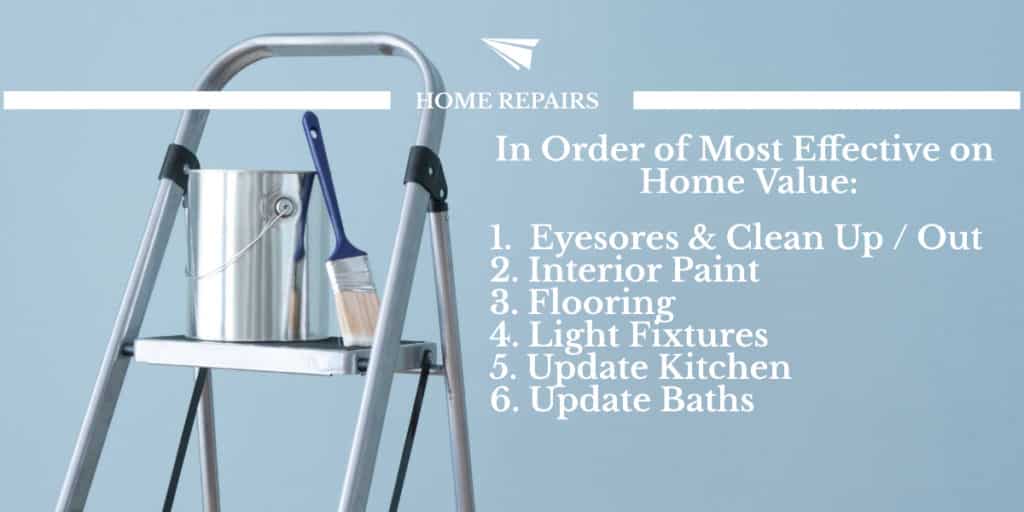
For help with deciding what kind of contractor to hire, reference our list here that describes who to call for various types of repairs.
Suppose the above list doesn’t matter to you because you need to sell a house that needs repairs. Perhaps it’s fallen into disarray and we are talking roof leaks instead of new carpet and foundation cracks instead of fresh paint. That’s a different conversation.
Repairs such as these call for a more serious approach lest you face the consequences of a greatly reduced value. How to sell a house needing repairs is much different than one that could just use some fresh touches.
I’m here to tell you that you can sell a house without doing repairs because I’ve done it. In 2020, it’s a strong seller’s market and it can be done. I’ve listed houses with crazy smells and and ugly… everything. But you are appealing to a much smaller pool of buyers which means a good price is harder to get and the house will likely be listed longer.
You will leave money on the table, more than what you would spend if you were to do the repairs prior to selling. And if you do get a buyer interested, don’t play hard ball because they may be the only one you get for a while!
Tidy Up, Personal Items & Décor
By now while learning how to sell a house by owner, you have surely seen the importance of de-cluttering and cleaning. Put yourself in their shoes. If you went to look at a house to potentially make your new home, does a stack of dirty dishes in the sink make you more or less inclined to submit an offer? There’s a reason the hospitality industry spends millions on cleaning and laundry.
Can they see themselves living there? Not with your family pictures at last year’s pie-eating contest all down the hallway! People feel more in control of their environment if it’s closer to “default” or blank slate: It has to be clean and tidy.
If we follow that thought process a step further, that also means overly personal items need to come down. It’s not helping the buyer to see photos of granny or your kids’ graduations. To them, it creates distance between them and imagining the place as theirs.
Other personal items you’ll want to consider taking down would be anything that is less common in other households. Go as far with it as you have the time to invest.
The furthest you can go with it would be paying a stager to set up each room with stock furniture and décor. This is a professional who knows current styles and can match design with your house. It certainly helps showings to go as great as possible! This is much more common to use in vacant homes, but if you are still living in your house and want to present it in the best possible light, it’s an option.

When we staged a property I had flipped at 2304 Dundee Lane, it especially helped in an oblong bonus room by giving some definition to possible uses.
If you are feeling some mental or emotional push back about committing to this prep work before photos and showings, you might not be convinced it’s worth the effort. Perhaps you are right, but how to sell your house without a realtor is up to you and you only.
I can promise you that these measures will certainly help showings lead to more and better offers, but it could be a very small difference, or it could mean selling the house in the first week vs 60 days.
Add More Lighting for How To Sell Your House, Then Add Some More
A well lit home makes photos turn out better and creates a more welcoming atmosphere for buyers walking through. Natural lighting is best, so start by pulling curtains to the side and opening blinds. You might even consider cleaning those windows!
Next, make sure every light fixture has light bulbs producing at least 400 lumens each. The tone of lighting is measured by frequency, or hertz, so shoot for higher numbers here as well. The means the light starts to look almost blue. Good.
Schedule Professional Photo Shoot
You might think you know how to sell your house with your iPhone camera, but that’s because you haven’t seen a pro job! Unless you are spending hours on editing the photos by adjusting lighting and coloring and whatever else magic they work, your iPhone will not come close.
Don’t believe me? Scan current listings on the MLS. Notice the ones where the photos look suddenly much lower grade than most of the others? They are darker, fuzzier… That’s because most people pay the professional photographer and it makes all the difference!
When a listing catches a buyers eye, the first thing they will notice is price. Then they’ll glance at the photo. If you have it priced appropriately, the photo is make or break!
It’s best to find a photographer familiar with houses. Sure, your friend who does wedding photography could do a good job, but if pricing is close to the same, go with the one works in this field all the time. Showcase is a popular choice here in Nashville & Middle TN with a price range of about $110.
3. Market Your House
If you want to know how to sell your house, then you must know: Exposure raises value. That’s why houses on the MLS sell for the most — It’s the most exposure a property can get.
Now, as prospective buyers are exposed to your house, emotion is everything. Your buyer will choose your house only if it feels right. You can tell them until you’re blue in the face that you just insulated the walls, but if they aren’t wowed by the appearance of your house, you’ve lost them.
Advertising Outlets
A nearly endless array of options awaits you for letting the public know about your house. The most important place to be is online, but do put a sign in the yard as well. Here is a list of the most effective methods to get the word out about your house for sale in 2020:
- Zillow.com – Start here for online advertising! You can easily find your property and create a For Sale By Owner listing… For FREE! Zillow also gets a lot of traffic so you’ll be sure to be seen by many.
- Craigslist.com – Once a soaring tower of dominance, CL tends to draw less serious searchers, but nonetheless, it is free and still gets a lot of visitors
- FSBO.com – Of all the For Sale By Owner websites with listings by many others who have searched how to sell a house, this seems to be the front-runner of traffic count.
- Sign in yard with phone number, price, and beds / baths (at the least).
- Facebook.com – you can target people with ads, post in the FB Marketplace section, or simply post on your profile to let people know. Ask them to spread the word as well!
- Online communities, such as the Nextdoor app and Facebook groups.
- Networking – Tell people you know in real estate or similar industries. They may know a buyer, and rapport is now already built-in.
- Post flyers in local businesses like coffee shops near your neighborhood.
Best Practices for Advertising Your House:
In your advertisements, focus on the positives. Highlight the things that matter most to your buyer, such as kitchen/bath updates, or unique features to the home.
Is there a primary feature or selling point of your home? Drive that point as your headline.
- “Top Rated School District”
- “Freshly Updated”
- “Open Concept Common Areas with Acreage”
- “View of Downtown Skyline”
Be as descriptive as possible. Make sure to give all the details you can think of that a buyer might be interested in, such as master bedroom size, type of heating / cooling, finished/unfinished basement, double vanity in main bath, lot size, fireplace… the list goes on. You never know who is searching online for “3/2 with fireplace” or any combination. Make sure they can find your listing!
Speaking of searching online, let’s touch on the concept of keywords. When people use google or sites like Zillow and FSBO.com, they may add words or phrases to describe specifics of what they are trying to find. Perhaps they filter for houses built after 1980, and they add a keyword “deck”. Make sure you add keywords and tags wherever possible.
And lastly, to take it up a notch, channel your inner salesman and “sell” this thing! Talk it up! Use some words in all caps, describe the benefits of all the features like “No stairs to drag yourself up to the bedroom after a long day and night!” or “Back patio for weekend BBQ’s!” Paint the picture. SELL it.
Pro Tip: Drive up demand and get the phones ringing by offering a 2.5 – 3% commission to buyers’ agents in your ads.
4. Field Buyer Inquiries and Showings
This is the part in how to sell your house yourself that you have to earn that commission you’d normally pay a realtor. As you receive calls, emails, texts, your mission is to provide customer service and salesmanship.
How To Handle Inbound Buyer Leads
Answer their questions quickly and thoroughly, but don’t forget to put a positive spin on aspects of the house. Your salesmanship ability will keep people from losing interest, and even better if you stir up in them a desire to get the house before another buyer does!
Above all sales skills, maintain enthusiasm! It’s magnetic, and it sells houses!
If your time is valuable, make a list of screening questions to ask each interested buyer before you bother with showings. Ask things like:
- How they will be financing the property? If they don’t have a firm answer, tell them to get back in touch when they have funding lined up.
- How much do they plan on putting down on the loan? If they say anything more than 5%, you have someone who has the wherewithal to save cash and has the means to make this deal happen.
- What they are looking for in a house. The more it sounds like your house is a not a fit, the more you can end the call with why it’s not worth their time.
- Why are they interested in this house? Then gauge the answer. Looking for a good school district for their preschooler is a lot different than wanting to be closer to the mall. Their answer to “why” will also provide you vital information throughout the process so you can give them what they want in negotiations.
Assuming they qualify, your job through all discussions is to move them to the next step in the process: Schedule a showing, make an offer, and close the deal. So at the beginning, you are moving them towards a showing.
Why? Because people rarely buy houses they’ve never been in. If you can get them interested enough to come see it, your odds of getting an offer have increased tenfold. Now that’s how to sell your house yourself!
Sell Your Property The Skyline F.A.S.T. Way!
Fair Price, As Is, Stress-free, and to a Trusted Brand.
Showings That Woo Your Buyers
In Section 2 we discussed how to sell a house by preparing the house for photos and showings, so now we can talk about the process of showings themselves.
Most Agents use a system like Showing Time to manage and keep track of showings. They can also gather feedback easily this way as well.
An hour prior to the appointment, call or text to confirm they will be there. Make sure everything is in it’s proper place with appropriate air fresheners.
Greet them with a big smile and start building that rapport right away. People do business with people they know, like and trust. You can accelerate the process by being friendly and getting to know them. It certainly helps in negotiations!
Own the frame. Be assertive and in control of the situation. The more you lead the buyer through the process, the more likely they are to be interested and submit and offer. It’s simply a law of sales and psychology.
You can go above and beyond with print materials discussing the details of the house and your contact info should they decide to make an offer. It gives them something to take with them. Which house is easier to forget: the house with no flyer, or the one with some photos and marketing descriptions now in the buyers car?
If the buyer has an agent, do your best to build rapport with the buyer, but pay attention to the vibes. The buyer may prefer to be left alone to explore the house with their agent. You don’t want to be the wimpy seller hovering around, hoping for an offer!
How to Sell Your House Yourself With an Open House to Save Time & Headache
Rather than keeping up with the schedules of multiple buyers and the appointments you set, you can set one open house on Saturday or Sunday. You also get to clean and tidy less often by getting many buyers in there at once.
Scheduling an open house is particularly useful if:
- You have a flurry of buyer interest all at once
- You have a tight schedule or prefer to limit trips to the house
- You simply don’t want to be bothered as often
- The admin work of aligning schedules with buyers doesn’t interest you
When you show it to many buyers at a time, you lose the personal touch and rapport opportunities. It’s harder to maintain control over how the showing goes, as one-on-one viewings give you the opportunity to highlight features and quickly move through negative factors.
Throughout all showings, pay attention to people’s comments and feedback. If everyone seems to be mentioning something they don’t like, try to correct the issue before your next showing. And if everyone’s eyes get big when they see how big the backyard is, make sure to talk it up in future showings! You get the idea.
5. Negotiate Offers
Exposure gets you more showings, and more showings gets you more offers. We tend to average an offer for every 7 – 12 showings, including both renovated houses (like this one in Antioch, TN) and As Is houses that we sell. So if you are approaching the 20s in number of showings with no offers, something isn’t right.

General Tips for Getting the Best Offer
In no particular order, here’s how to sell a house by playing the game of stirring up good offers.
1. Listing Price Misfire: If you get 2 or more offers that are near each other over the course of at least a week, and they are not near your asking price, that’s a strong indication your price is not the current market value. And, if they are way below your asking, there’s a decent chance someone out there will make an offer somewhere in the middle.
2. The Days On Market Dynamic: Speaking of which, it’s mostly common knowledge that the longer a house is on the market without selling, the more suspicious buyers are of the value and thus the lower their offers. It’s not scientific, but multiple offers the as soon as it’s listed will inflate the value, and little interest for a couple weeks will invite artificially lower offers. Human psychology makes how to sell a house a less intuitive process.
Thus, before you accept that low, low offer, drop the listing price and stir up some interest again to get that offer in the middle.

3. Talk Up Buyer Interest: From the first call after the house is listed all the way to the closing table, when speaking to buyers, create some leverage for yourself by talking up the activity and interest you are getting. No need to lie, but phrase things in a way that gives each buyer a sense of urgency to get it before somebody else does.
Remember that strange human psychology? Talking up the property and interest could be the difference between a lazy buyer and a buyer afraid to lose it. It could be the only offer you get!
For example, now that you know how to sell your house yourself, you might casually mention during a showing that you have another showing scheduled after this but you figure 45 minutes is enough time.
And once you get an offer, play that card as much as you can! No matter the offer, tell buyers you have a decent offer on the table but you are holding off making a decision for 48 hours, or something like that.
It will make a big difference if you can plant little seeds that hint at demand for the property throughout all buyer conversations. You came here to learn how to sell a house, but now you might not be convinced. The salesmanship… It’s a lot of work! Is it effective?
I’ve talked to 100s of sellers and realtors and bought dozens of houses and I can tell you right now that as a buyer, planting these seeds works. I feel it. I’ll be completely transparent and show my cards: If a seller says they have other investors coming to look at it today, it changes my approach.
But it is possible to overdo it. Don’t tell buyers you have 3 really, really strong offers that just came in this morning. They’ll cancel their showing, or they won’t bother sending an offer, and for all you know, that could have been the best bid!
4. Ask For The Sale. Always gently remind buyers what next steps are, especially if they don’t have an agent. An hour or so after the showing, ask the buyer if they had any questions or if they’d like to make an offer.
How to Sell a House by Negotiating Offers
Negotiation is one of the highest level skills a person can obtain and is also one of the highest paid. FBI hostage negotiator Chris Voss wrote Never Split The Difference which is a favorite book of mine. Imagine a higher-stakes job than talking criminal ringleaders down from the ledge and releasing hostages, often without paying a penny.
You can see that there is no ceiling to this skill set. The good news is you don’t need to be a trained hostage negotiator in order to draw the best offer out of a buyer because I’m going to give you the most effective tactics in How To Sell Your House: The Ultimate Guide.
Before we get into that, let’s first quickly discuss some fundamentals when it comes to looking at offers and how to sell your house without a realtor:
- Not all same-price offers are created equal. Similar to #2 above, but just because offers have the same price does not mean they are equal offers. Terms cannot be overlooked, to the point where an offer with weak terms can be nearly worthless.
For example, FHA-financed and first-time buyers will usually bail on a contract during the inspection period of the first house they contract. It scares them. So if you are looking at offers like that, you could be back to square one in 21 days looking for a buyer again. - Know that nobody offers their best price first, which is how to sell your house for the best price possible. They have more up their sleeve. Always.
- Home transactions typically have multiple counter offers. This is how you see what they are made of. Notice how much their first counter offer changes. Do they only go up $1,000 in price? Now you know you won’t be able to get much more out of them, but you can still talk up your offer to other buyers. Use it as leverage.
- Know your deal breakers before you get started. This way you don’t get backed into a corner feeling taken advantage of when you accept an offer. It also helps you move more quickly when you get an offer that does meet your criteria.
- Document your comps and research to defend your asking price.
How To Sell Your House Negotiation Tactics
- Maintain strong rapport WHILE asking for more. This is the core skill of a good negotiator. Make the buyer feel like you care about them (because you do) while at the same time asking for more: higher price, quicker close, more earnest money, etc. The longer you can hold that tough tension, the better your results.
2. Make sure you know what they want. This is the sweet spot of negotiations. Maybe they offer your asking price but with $6k of closing costs paid to buyer. If you know their top priority is coming up with as little cash as possible, you know they would probably be willing to pay $6k over asking price in order to get their closing costs cash.
3. Never take a first offer, keep asking for better. “Is that the best you can do?” This helps them feel like a win when you come down from your price and terms some.
4. Highest and best. A favorite tactic of realtors, once you receive at least 2 offers, notify all buyers to submit their highest and best. Not only will this natural push up the price and terms on the offers you are receiving, there starts to be a psychology factor where buyers get emotionally invested and inflate their offers even more.
5. Ask for things that aren’t that important to you so you have something to concede later. A typical example of this is to put on the contract that you take all appliances with you when you sell. It can slip into the agreement mostly unnoticed. Perhaps during the contract, the buyer asks for a couple thousand dollars of repairs. You could offer to leave appliances instead. And now you don’t have to load them into a truck!
6. Hint at urgency and moving quickly with all buyers. You can either give hard deadlines, such as asking for an offer by 5 pm today to be considered, or you can imply timelines with how you word your communication.
7. Never let an offer die on your desk, always make a counter-offer. There are many reasons for this, but the primary focus is to always give people specific terms you’ll accept for them to consider as time goes on. Even if you counter back the same offer as before, make sure they know where you stand.
6. Accept an Offer & Close the Deal
In this section about how to sell a house, we’ll discuss the necessary paperwork, moving from contract to close, and things to know about the closing table. It’s a long and laborious process, but it’s worth it for such a large asset. Doing many things wrong could mean $1000s less in your pocket!
Now that you’ve learned how to sell your house through pricing, prepping, and marketing your house, fielding interest, and negotiating offers — it’s time to accept an offer.
How To Sell Your House Yourself Paperwork
It’s easy to start worrying about what paperwork is needed before you’ve even priced or marketed your home. Paperwork and contracts are intimidating and often cause sellers to impulsively research.
Having contracted dozens of homes, I can tell you the paperwork can be far more simple and easy than you think.
If you have ever worked with a real estate agent before, you might remember signing an endless droll of documents before even getting to the closing table. There’s lead paint disclaimers, agency status confirmations, blah blah blah.
You don’t need any of that. After years of buying houses for cash, I’ve used two contract forms to sufficiently handle every single transaction:
- 2-Page Purchase & Sale Agreement
- 1-Page Addendum
To get a copy of these docs that we use every day in our business, send us a message to Contact Us.
The PSA contains fundamental clauses like buyer or seller breach, inspection contingency, and title expectations. Once this is signed and earnest money is deposited, there is officially a binding contract between buyer and seller.
If you are learning how to sell your house yourself, then you should know the Addendum is a catch-all for any changes made to the original agreement. I’ve mostly used it for closing date extensions, price adjustments after inspections, and changing title companies. Use it for whatever you need!
Now, it should be noted that each state will have slightly different clauses. The shorter the contract, the less variance needed to adhere to local laws. Nonetheless, you should try to use paperwork that applies to your state.
Most states require an attorney to facilitate the transaction, which means you are paying an attorney anyway.
The best way to obtain paperwork needed to sell a house is from the attorney that will handle your transaction.
You’ll know you are getting a legally sound document that works for your area, and most of the time they’ll provide the template for free because you’ll be a paying customer when you close the deal.
If you still aren’t convinced, you can do some amateur sleuthing with Google and you should be able to find the form your local realtors use. They all use the same template!
Contract To Close
Whatever contract you decide to use, discuss and specify terms with your buyer, update the contract, and sign it together. You’ve come a long ways, but it’s not over yet! In my experience, roughly 20% of my buyers did not close the deal after a contract, usually due to the inspection contingency.
Pro Tip:
Use electronic signature software to save you the hassle of meeting in person. Some of these services are free, such as HelloSign.com.
Now begins the waiting game, though a prudent seller that knows how to sell a house does not twiddle their thumbs! I know many thought leaders that go so far as to get the bank’s contact information from the buyer or agent and follow up regularly to make sure the sale is on track to close and close on time.
Check in with the buyer often to make sure things are moving along. A typical closing is 5 – 6 weeks, so if things get off track, it can cause major delays. Plus, it’s better to find out earlier in the contract if there are problems so you can kill it and start over with a buyer who will actually close!
You want to make sure buyer earnest money is deposited (usually in your attorney or title company’s escrow account). Then, the primary hurdle to tackle is the inspection period. Help them get their inspector in there ASAP, maybe call a couple days later to get their first impression.
Negotiating Inspection Repairs With Your Buyer
One of the trickiest parts of how to sell a house by owner is negotiating the inspection repairs. If the buyer has a good agent with excellent scripts, they’ll have already discussed preparing mentally to see the inspection report. It’s hard to not feel like they just hung most of their financial future on a dumpster.
I’ve even made a policy for myself to wait 24 hours after reading an inspection report on a property I’m buying before I make any decisions. There’s something about it that gets right to the primal part of the brain!
A typical inspection report will come right out of the gate with a list of the worst things on page 2 or 3 (it can also be alarming to see 65 PAGES):
Get ready to talk the buyer and agent down from the ledge. Hear them out about their concerns and make sure to pay attention to which items concern them the most. Sometimes the buyer doesn’t even realize how inexpensive some of the items are that are scaring them out of buying a house!
Be sure to casually downplay the issues as well. “The FHA lender requires exposed wood around the window to be painted or they can’t fund? Why, that’s nothing but a can of paint and a couple stroke of a brush!”
You can play hardball and only offer to make a couple repairs, but you risk the buyer completely walking away, and then you have to start over with finding a buyer again! When choosing repairs to do, I like to first look for items that are most urgent.
You might be surprised to know that very few are urgent. If the heat doesn’t work and it’s winter, that’s quite important! But inspectors love to point out “exposed” wiring junctions without a box, meaning a couple wires are twisted together. It sounds concerning, but is a non-issue.
After I’ve picked a couple reasonably urgent items, if they are expensive, I’ll send a counter back to the buyer with what I’m willing to do. Otherwise, I’ll start looking to do as many inexpensive items as possible. The buyer isn’t thinking in terms of price, but more in volume. If you can show how to sell a house by completing 80% of their repairs request, they’ll probably be fine with it.
You can also keep in mind that many buyers would be glad to get cash at closing instead. They might even be excited to “save money” by doing the repairs themselves.
Keep in mind that the buyer has more invested in this deal than you do at this point, all you have to lose is some time. The buyer has paid for the inspection, perhaps paid some fees to the lender already, and has invested many hours lining up all the people they need to get the house closed.
Use it it to your advantage but don’t bully them right out of the contract! Once you agree to repairs or cash settlement, sign an addendum and send it to the closing office. Onward!
Post-Inspection & Pre-Closing
I usually wait until after the inspection period before I do any prep for closing. It takes a lot of time to send the closing office various documents they need, and if the buyer bails on me, that’s wasted time.
If you agreed to do repairs, get started on those right away. Sometimes contractors that are affordable are booked weeks out.
You’ve arrived at the easy part of how to sell a house by owner. The middle 50% of the closing timeline is mostly waiting on the lender, and they are mostly waiting on an appraiser. It still shocks me that appraisers often have 3 week turnarounds!
Check in weekly with the lender or the agent. Good questions to ask will happen somewhat in this order:
- Has the appraisal been ordered? When will he need access to the house?
- When is the appraisal due back?
- Do you foresee any potential issues with the buyer being able to get funded?
- How long does it typically take to turnaround and close the loan after the appraisal is received?
In the week leading up to closing, activity will pick up. The buyer will want to do one last walk through, the lender may find a couple things you have to deal with last minute, and closing may have to get extended for the lender.
The last week also seems to be the time where stuff can hit the fan. The lender now realizes they don’t like the risk ratio so they ask for more of a down payment from the buyer, or any other number of things they find out about when they start running final processes to close.
80% of the work is always done in the last 20% of the time (Pareto’s Principle), which applies to… everything. This means deals can pivot on a dime. Have I mentioned my philosophy?
Every real estate transaction will have at least one moment of truth to make or break the deal.
Almost to statistical perfection, I’ve found that something always comes up during the contract. If the inspection goes by quietly, it’s going to be the lender pulling some crazy requirement out of nowhere! You just never know what it will be, but be ready to fight to push the deal through by pulling out all the stops you got.
While you work out any fires that come up, be sure to ask for and review the settlement statement before you go to closing because of two main reasons:
- You need to review all the cash flows to make sure they are right. Something always needs changed before closing.
- If you wait until closing, you have much less leverage. If they over-charged you by putting you on the line for the buyers closing costs, even if it was an honest mistake, are you really going to delay closing and come back later for $200?
If you still have your warranty title policy from when you purchased the home, submit it to the closing office for a 30% discount (varies by state).
How to Sell A House By Owner At The Closing Table
The big day has arrived and it can feel a bit anti-climactic. “All this build up and all I have to do is show up and sign a couple papers?”
Pretty much.
Here’s a quick punch list to cover the main things before you make it official:
- Get all of your belongings out of the house. Last call!
- Make sure utilities are set to come out of your name lest you pay for the next few week’s of your buyer’s high livin’ (ask me how I know)!
- Set up mail forwarding with USPS if you lived there.
- Bring house keys, your bank account info for sale proceeds, and your ID to closing.
Conclusion of How to Sell a House by Owner
I hope How To Sell Your House: The Ultimate Guide was helpful. If there is something you would want to know more about, drop a comment below. We update our content regularly!
Later on, I’ll be posting an altered guide with how to sell a house with tenants, but this guide will still carry you most of the way. For a couple rental-specific tips, check out our 4 strategies here.
Remember, to skip the hassle and sell your house fast in Nashville or sell my house fast Chattanooga, we can help!
Sell Your Property The Skyline F.A.S.T. Way!
Fair Price, As Is, Stress-free, and to a Trusted Brand.

